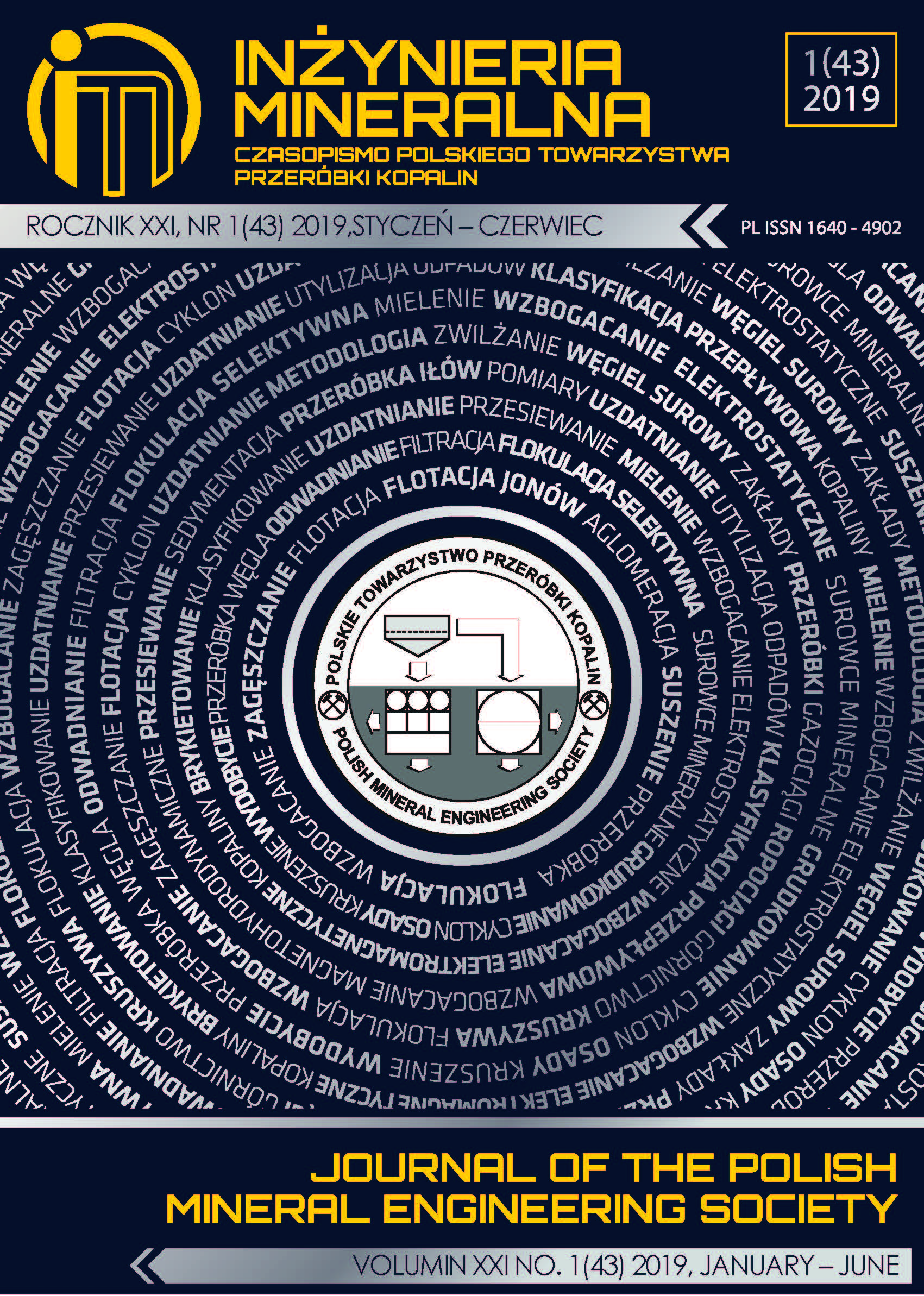Utilization of Blast Furnace Slag for Immobilization of Copper Ions from Solution
Abstract
Disposal of wastes containing metal ions such as Cu(II) ions is serious problem nowadays. Various materials are utilized for the
purpose of immobilization of Cu(II) ions. Attractive type of material is represented by slags – waste from the metallurgical industry.
Raw and alkali-activated blast furnace slag were studied for the purpose of immobilization of Cu(II) ions from the aqueous
solution and for disposal of Cu(II) containing wastes. Slags were saturated by Cu(II) ions. Amount of Cu(II) deposited on the raw
slag was 6.35 ± 0.12 mg/g and amount deposited on the alkali-activated slag was 151.37 ± 0.95 mg/g. The saturated materials
were thermally treated at 100, 500, and 1000°C. The thermal treatment leads to the slight structural changes in the case of raw
slag and to the significant structural changes in the case of alkali-activated slag. Cu(II) ions probably incorporate to the matrix of
materials. The materials based on alkali-activated slag exhibit higher stability to the leaching of Cu(II) ions compared to raw slag
based materials when only 0.13% of the total immobilized amount of Cu(II) ions was released to the solutions during the leaching
experiment in the case of alkali activated slag compared to 12% in the case of raw slag. The higher temperature of treatment leads
to more stable material in the case of both initial slags. The studied materials are less stable under the acidic conditions in comparison
with the neutral and alkaline conditions. Alkali-activated blast furnace slag could be promising material for the Cu(II) ions
immobilization and for the safe disposal of Cu(II) containing wastes.
Copyright (c) 2021 Martin MUCHA,Lenka BLÁHOVÁ,Karolína PEŠOVÁ,Tomáš JUŘICA,Dimitrij KOLNIČENKO

This work is licensed under a Creative Commons Attribution-ShareAlike 4.0 International License.
This journal permits and encourages authors to post items submitted to the journal on personal websites or institutional repositories both prior to and after publication, while providing bibliographic details that credit, if applicable, its publication in this journal.







.png)
